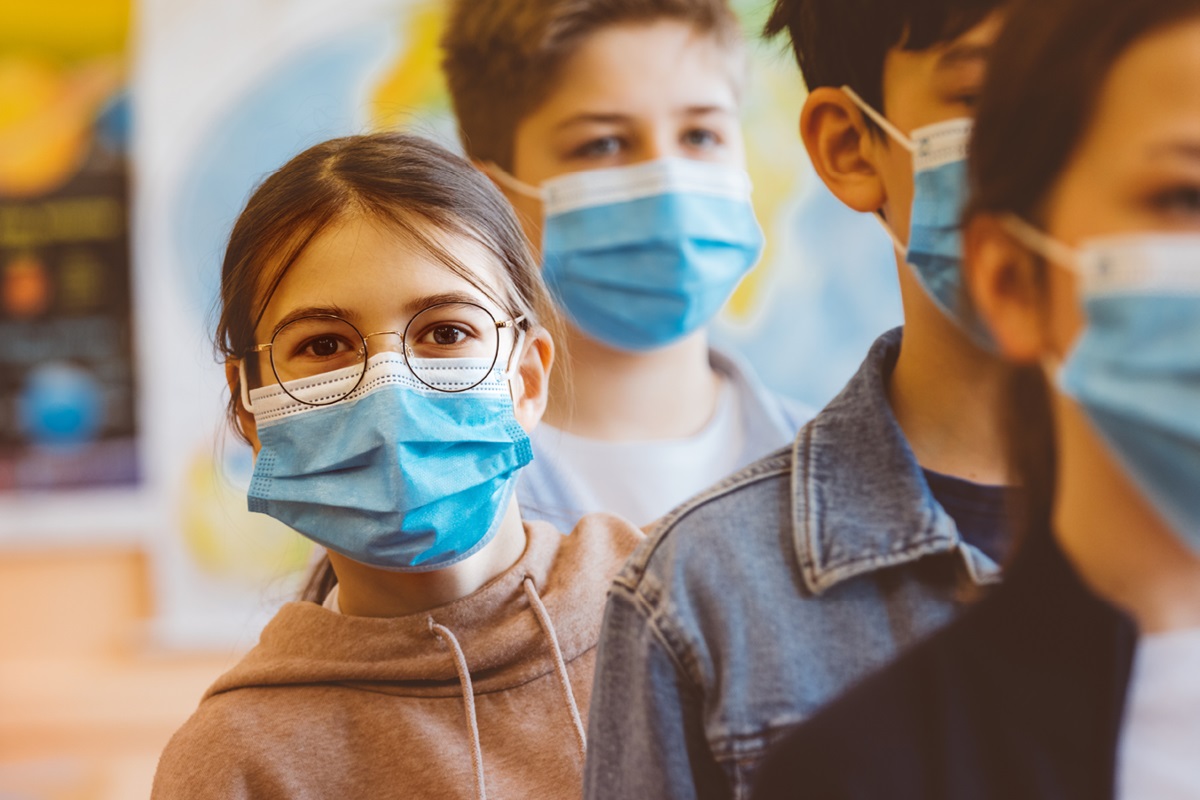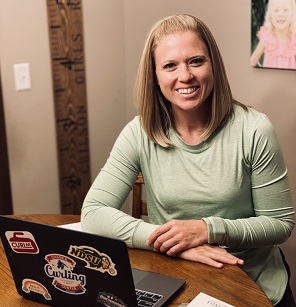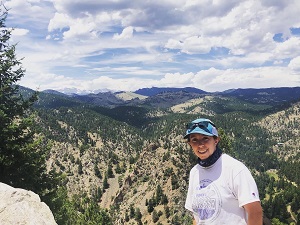Teachers with T1D Talk Back-to-School

Much has been said about whether it’s safe for our children to return to in-person classes this fall, but what about their teachers?
We asked three teachers who are living with T1D to share their perspectives and plans for back-to-school, including their biggest concerns (for their students and themselves), the importance of teachers working with their school nurses and what teachers need parents to know about the start of a new school year during the coronavirus pandemic.
As an educator, what are your biggest concerns for your students if you return to in-person classes?
Jamie Chilson, Grade 5 teacher at Five Hawks Elementary School in Prior Lake, Minnesota 
“I know that it will be very different than my prior 14 years of teaching, the number one concern is safety. How can I keep everyone and myself from contracting or spreading the virus? I don’t know. I feel that if we return in person, I will have more than just teaching my students the state standards, showing them how to enjoy school, preparing my students for greatness and how to treat others with empathy and kindness. This year I am going to feel the added responsibility of keeping everyone healthy while trying to stay healthy myself with type 1 diabetes”
Mark Picardo, Grade 2 teacher at DeWitt Road Elementary School in Webster, New York
 “I am concerned with the realistic ability for students to be able to abide to restrictions recommended such as wearing masks and maintaining social distancing. 7 and 8-year old students will have a difficult time holding to these mandates every day for the fall at a minimum. In addition, these restrictions create an unnatural and unresponsive environment for children to learn in. Teaching is all about creating relationships with students and among students. Kids want to play, be around each other, hug their teachers, and feel loved and welcomed. Although I 100% agree that kids and staff need to be safe, I worry and think constantly about what I can do as a teacher to still make connections with my students and create a joyful, warm, and supportive environment for them to learn in, whether it is virtual or in person.”
“I am concerned with the realistic ability for students to be able to abide to restrictions recommended such as wearing masks and maintaining social distancing. 7 and 8-year old students will have a difficult time holding to these mandates every day for the fall at a minimum. In addition, these restrictions create an unnatural and unresponsive environment for children to learn in. Teaching is all about creating relationships with students and among students. Kids want to play, be around each other, hug their teachers, and feel loved and welcomed. Although I 100% agree that kids and staff need to be safe, I worry and think constantly about what I can do as a teacher to still make connections with my students and create a joyful, warm, and supportive environment for them to learn in, whether it is virtual or in person.”
Laura Van Horn, Grade 7 math teacher with Aurora Public Schools in Aurora, Colorado
“I think about not only the physical health of the students, staff and their families around me, but  also their mental health… We all know that each day that has gone by since March has been challenging for many reasons and I am preparing to help students talk about what this time has meant to them. What has been challenging, what they have learned from the global pandemic, how teachers can meet their social emotional needs first, before their academic needs. We know students don’t perform when they are sick, but we also know they don’t perform when their social emotional needs are not being met. I will be prioritizing part of my class time to ensure students have this safe space.”
also their mental health… We all know that each day that has gone by since March has been challenging for many reasons and I am preparing to help students talk about what this time has meant to them. What has been challenging, what they have learned from the global pandemic, how teachers can meet their social emotional needs first, before their academic needs. We know students don’t perform when they are sick, but we also know they don’t perform when their social emotional needs are not being met. I will be prioritizing part of my class time to ensure students have this safe space.”
As an adult living with T1D, what are your biggest concerns for your and your family’s health and well-being if you return to in-person classes?
Jamie Chilson:
“I have never let T1D get in my way or stop me from doing anything…. One of my big things that I share with my students is that they should not let anything hold you back. This year I have gone back and forth with letting the fear of this virus and T1D slow me down or facing it head on. So, I know that being with my students is the preferred method of schooling by so many, including myself, but I need to know that everyone is also taking the safety protocols that are put in place seriously. It really makes me nervous when I hear so many complain that masks don’t work or this virus is a hoax on social media, because I am the one who gets to educate their children and is it fair to put my health in jeopardy because they feel they can’t be told what to do?”
Mark Picardo:
“It is important for me to act with extra precaution because as much as we think we know about the virus, it is clear that we do not know how the virus will impact people on an individual basis. I think that is the scariest thing about the virus; there are few patterns or behaviors that the virus is consistently displaying. We do not know how it will behave from one day to the next and we continue to learn about more and more effects it is having short-term and long-term. With all that being said I am frightened about the risk that I will be putting myself and my family in when I eventually return to school… My wife, Kayla, and I are both teachers working in Webster and our priority is to stay safe ourselves so that we are not putting our 1-year old son, or our parents, at risk of being exposed to or contracting COVID.”
Laura Van Horn:
“Since I have only had T1D for a little over a year, I have not experienced going through any illness while managing type 1, which makes handling COVID full of uncertainties. As a young adult who could potentially be returning to in-person school during a pandemic, my fear is that I could at some point be asymptomatic and spread COVID to my coworkers, students and their families. When it comes to protecting my health and well-being as a type 1 diabetic, I plan to continue to take all the necessary precautions recommended by the CDC to ensure my health, as well as those around me. Lastly as I set out to return to work, I have been following my Dexcom and Control IQ data ( it helps that I’m a math teacher and enjoy data) to ensure that I have good quality control over my blood sugar levels. Plus, you can never forget a good workout to help keep those numbers under control as well as getting a mental break from the day of meetings.”
What do you think teachers should be doing to help the school nurse or healthcare provider staff during this stressful time?
Jamie Chilson:
“In order for us to support the school nurses, teachers need to follow the protocols put in place. It is not our normal start, and we are not exempt from following the rules put in place. We will have more placed on our plates, but it is all done with safety in mind.”
Mark Picardo:
‘Nurses are already overwhelmed on a daily basis with kids and protocol. Teachers will be supporting our nursing staff by following protocol and guidelines, communicating with families and students and supporting our initiative to stay safe. If we do not work together as a building team, the plans we have in place will not work and we will be putting ourselves and our students at risk.”
Laura Van Horn:
“This year it is very important to work as a team with the nurse to ensure that their offices are not being overrun with students all at once. It is important that we have the tools to keep students in the class unless they are feeling sick and we are also keeping tabs on how students are feeling.”
Parents: Find out how you can establish positive relationships and create the best possible care routines with the school nurse. Brought to you by our Back to School sponsor, Lilly Diabetes.
What do you want parents to understand about going back to school during the pandemic?
Jamie Chilson:
“I need parents to understand that we are all in this together. We hear that over and over, but I have never meant it more. Our children feed off of our responses and if we go into whatever is decided with a positive attitude, no matter what we are truly feeling, everyone will rise to the occasion. Know that I will do everything I possibly can to make sure my students are rising to meet the goals I set, but I need parents to take on that supportive role to make sure their kids are successful.”
Mark Picardo:
“As much as the plans for fall will be difficult to adjust to and less than ideal for parents, teachers are doing everything we can to help support the kids, and their families, not just with their learning but also in ensuring that they are physically, mentally, and emotionally healthy. This pandemic has had a serious toll on the mental and emotional well-being of our kids and we truly have to think of their safety and health first. The kids cannot read or add and subtract if they are feeling unsafe or worried about their health.”
Laura Van Horn:
“We will always put not only your student’s safety first, but their families as well. If and when the schools decide to go back to in person learning and your family is not ready, that is ok, we will still be there for your student each and every day. If we are all remote that doesn’t mean we are going to be doing half of what we would normally be doing in a traditional classroom. As a matter of fact, we are probably making some personal sacrifices in order to make sure your students are still getting the best education even during a pandemic. For Example in the Spring I would work my normal 8:30 a.m. to 3:30 p.m. work day, go work out and eat dinner then come back and work on data for the next day, extending my work hours late into the night to ensure each student’s remote experience was tailored to them as a student and the needs of them and their families.”
What words of inspiration do you have for students and parents who may be nervous about school starting?
Jamie Chilson:
“For my fellow T1D warriors and parents out there, know that teachers will do anything to protect their students! Communicate with those teachers and educate them on the needs of your warriors. Teach your children to stand up for themselves and advocate for their needs, whatever those maybe. It really is a great life skill to have!”
Mark Picardo:
“The happiness and well-being of our students is and always will be our first priority and with the support of parents and the community, their teachers will be frontline workers helping to make sure they are learning, laughing and growing.”
Laura Van Horn:
“Students, know that if you’re in a seat in the classroom or at your home, you are still a part of the class community and when you and your family are ready to come back to school we will welcome you with some air hugs, air high fives and ensure you have an easy transition back to class. This is a different type of year that no one has gone through before and we are all in this together.”
Consult JDRF’s School and T1D Resources for additional information that parents, teachers and school healthcare providers need to know every academic year.
Related Content: Are teachers with T1D going back to school in Latin America? Find out what some teachers who live there told our partners at Beyond Type 1 about going back to school in the midst of this new reality–especially for people who live with diabetes.